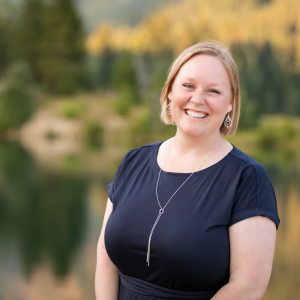
June is Pride Month, which is celebrated annually to honor the 1969 Stonewall Riots in New York City. “The Stonewall Riots served as a catalyst for the gay rights movement in the United States and around the world,” reports History.com. This year is a particularly good time to pause and reflect on how communities can drive real change—inside companies and around the world. We recently spoke with Shanis Windland, vice president of Diversity, Equity and Inclusion (DEI) at VMware, to get her perspective and insights on building companies where we all want to work.
How has your career journey evolved to focus exclusively on DEI?
Shanis: I began my career as a certified public accountant. Eventually, I managed large accounting teams before moving to a broader role running all of the finance for a gaming startup. In my last role, CFO at Heptio (now part of VMware), finance, HR, recruiting and other teams were in my purview. As employee number four at Heptio, I helped build the company and culture from the very beginning. That’s really my passion, building both companies and cultures.
At VMware, I’m focused on building diversity, equity and inclusion into the company’s fabric and ensuring our business-led strategy is embedded in every decision that the organization makes. For me, it’s an opportunity.
Inclusion and diversity are so often spoken about together. What’s the difference?
Shanis: Diversity is who we are, and inclusion is all about our actions and behaviors.
So, diversity includes all the different dimensions of your company population, while inclusion encompasses:
- Whether or not employees have opportunities to succeed.
- Whether others listen to them and consider their perspectives.
- Whether they get promoted at the same rates as others, making them equals.
It’s important to note that you can’t have a culture of inclusion without equity. We must first ensure fairness and equal opportunity before we can be truly inclusive.
When and how did you first discover that DEI especially requires leadership to lean in?
Shanis: I’ve spent my career working in technology companies, mostly startups. Often, I used to be the only woman in the room or at the table. As I grew in my career, I realized that wasn’t acceptable to me. I started to step up, speak out and become a sponsor for others in the same position, including underrepresented groups. My job as a leader is to bring new and different people to the table and to the room. I came to realize that when I gained experience and influence, my job was to use it to help others.
How does a company go about building or changing its workplace culture to embed DEI into the business?
Shanis: You have to be all-in when it comes to culture, and you have to be intentional about what kind of environment you want to create. Your leadership and your employees have to agree on what makes the culture special, and you have to promote those ideas.
For example, making sure employees and partners know:
- Your work is recognized.
- Your voice is heard.
- You belong.
- Talent is respected and promoted.
- You’ll be able to work on things that you find interesting and challenging.
- We are humble enough to listen and change.
Being intentional and being firm about what is and isn’t acceptable (and sticking to that) are important pieces of building a great culture.
Why are companies focusing more on DEI?
Shanis: It’s about the business case. Employees bring different viewpoints, backgrounds and experiences to a company. They then challenge each other to build better products and a better place to work. When we actually represent the world around us in our workplaces, we’re going to build what the world needs and not just what I need or what you need. It’s a business imperative in competitive marketplaces to be our best and do our best work.
It is also about retaining the best and broadest possible pool of talent. Organizations cannot retain this talent without building a place where all employees can actually see themselves succeeding.
At VMware, we truly believe in the power of human difference. In building a company culture where everyone feels they belong, we know this will help propel VMware into the future. And to ensure we’re all held accountable for attaining our DEI goals, we built them right into our 2030 Agenda. By 2030, we’ve committed to several mission-critical DEI goals, including:
- Equitable pay.
- Supplier diversity.
- Technology accessibility.
- Diverse hiring and inclusive leadership.
- And many more.
What is your advice for organizations that want to drive real progress on DEI initiatives?
Shanis: Executives and managers need to have a personal commitment to make it successful. Employees know when management is truly bought in and when they aren’t, so that authentic commitment is really important. Having humble executives who listen, build trust and truly share their authentic stories goes a long way.
"Companies invested in transforming the future will be great at business and great at bringing out the best in people."
Employees want to integrate work and play. They want to feel connected, to feel like life inside and outside of work matters. They bring something unique to conversations. When an executive or manager isn’t authentic, the people working for that person aren’t going to believe the company cares—even if you have a diversity, equity and inclusion program. My view is that companies invested in transforming the future will be both great at business and great at bringing out the best in people.
Do you think there’s an ideal culture where everyone wants to work?
Shanis: No, there isn’t one ideal culture. In fact, some employees will experience their company differently from others. A shared purpose, a shared vision and a set of values that everyone ascribes to is important. But other than that, each person brings their own unique perspective, which fundamentally helps shape the culture.

For me, these are the basic building blocks of great culture:
- Value diversity. People from different backgrounds with different experiences bring different perspectives. Their perspectives challenge current approaches, which helps build better companies.
- Practice transparency. Share information where possible (e.g., financial and product roadmaps). Employees not only deserve to know where time and money is spent, they also gain context to make better day-to-day work decisions.
- Hire employees with values, skills and growth potential. Shared purpose and vision are more important business characteristics than a homogenous team.
- Listen and value input enough to make a change. Talent that gives and receives honest feedback is important. So is being humble enough to embrace change based on input.
- Recognize people who contribute to the future. Companies that focus on providing growth opportunities and promoting from within build stronger cultures.
I also believe that building a great culture means we need employees who are willing to give their input. At some point, they have to decide, “This is a company I want to be a part of.” Second, “This is a workplace I care enough to influence.” Then, all employees have to be brave about bringing what they believe are best practices and help put them into place.
Everyone benefits when you build the place you want to work.

